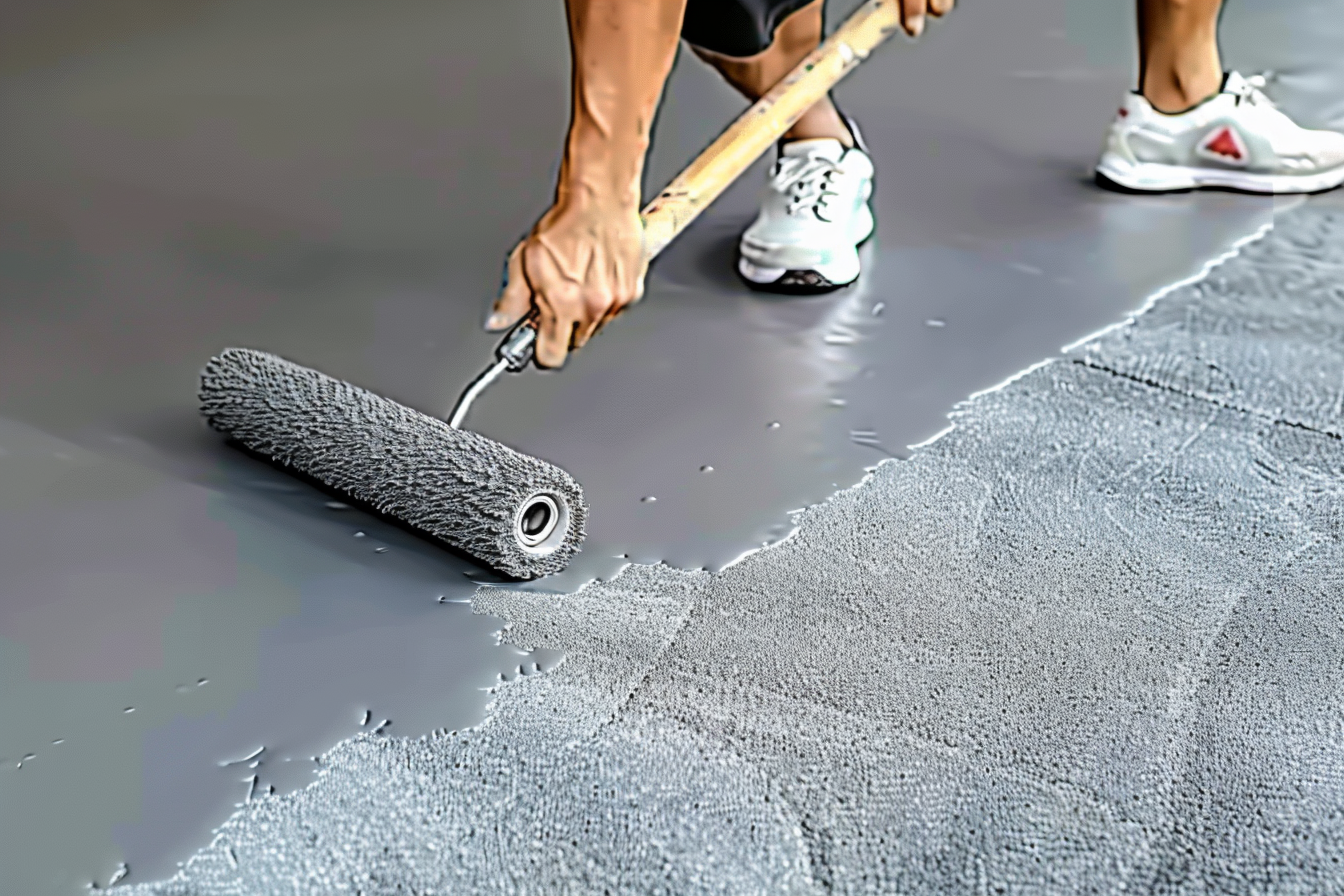Garage Floor Coatings: Epoxy vs Polyaspartic Guide
Upgrade your garage with the right floor coating. This in-depth guide compares epoxy and polyaspartic systems, explains benefits like easier cleaning, improved appearance, dust and moisture control, and walks you through costs and installation steps so you can choose the best option for your space.

Why a floor coating is one of the best garage upgrades
A finished garage floor does more than look good. A durable coating protects concrete from stains, cracks, and wear while making the space easier to clean and maintain. Coatings reduce dust, block moisture penetration, and create a surface that stands up to vehicle traffic, tools, and spills. Whether you use the garage for parking, a workshop, or storage, a professional-grade coating extends the life of your slab and raises the utility and curb appeal of the area.
Key benefits to expect
Improved cleanability and maintenance: Coated floors wipe clean quickly and resist oil, grease, and common household chemicals. Instead of scrubbing porous concrete, you can sweep or mop a sealed surface with far less effort.
Enhanced aesthetic appeal: Coatings are available in a range of colors, flakes, and gloss levels. From sleek solid colors to decorative broadcast flakes or quartz, a coated floor transforms a utilitarian area into a stylish, showroom-like space.
Dust reduction and moisture protection: Unsealed concrete sheds fine dust and absorbs moisture, which can lead to efflorescence or mildew in humid climates. Proper coatings seal the surface, reducing airborne dust and slowing moisture transfer.
Durability and longevity: High-quality systems resist abrasion, impact, and chemical attack. When installed correctly, they can protect the concrete for years, minimizing costly repairs and resurfacing.
Coating types you’ll commonly see
There are several choices for garage floors, but two systems dominate for their balance of performance and value:
Epoxy coatings: Epoxy is a two-part system made from resin and hardener. Mixed and applied to prepared concrete, epoxy cures into a tough, chemical-resistant surface. It’s favorite for its strength, wear resistance, and versatility—epoxy can be poured in thicker builds to fill low spots or create decorative layers.
Polyaspartic coatings: A more recent innovation, polyaspartic (a variant of polyurea chemistry) cures extremely fast and tolerates a wider range of temperatures during application. Polyaspartic formulas offer excellent UV stability, so they’re less likely to yellow in sunlight, and they deliver durable, flexible finishes with rapid return-to-service times.
Other options: Acrylic sealers, polyurethane coatings, and latex paints are available but generally provide less long-term protection than epoxy or polyaspartic systems. They may suit short-term projects or lower-traffic areas but won’t match professional epoxy/polyaspartic performance.
Epoxy vs. polyaspartic: how to choose
Curing time: Polyaspartic systems cure much faster, often allowing foot traffic or vehicle return the same day. Epoxy typically needs 24–72 hours to achieve full hardness.
Application temperature: Polyaspartic coatings are forgiving in cooler conditions and can be applied across a wider temperature range. Epoxy usually requires milder temperatures to cure optimally.
UV resistance: Polyaspartics generally resist UV-induced yellowing better than many epoxies, making them preferable for garages with large windows or frequent sun exposure.
Thickness and repair: Epoxy can be applied in thicker layers, which helps when covering rough or pitted concrete or when building decorative, multi-layer finishes. Polyaspartic tends to be applied thinner but still provides excellent protection.
Cost: Polyaspartic systems are typically pricier than epoxy due to faster cure times and enhanced UV stability. The right choice depends on budget, timeline, and performance expectations.
Step-by-step application overview
-
Surface preparation: This is the most important phase. Concrete must be cleaned of oil, dirt, and contaminants. Cracks and spalls should be repaired. Grinding or shot-blasting creates a textured profile for the coating to adhere properly.
-
Priming: A primer helps bond the coating to the concrete and can reduce outgassing or bubbles in the top layer.
-
Base coat: The main coating is applied with rollers, squeegees, or spray equipment. The method depends on the product and the desired finish.
-
Broadcasting (optional): Colored flakes or quartz can be broadcast into the wet base coat for traction and decorative effect.
-
Top coat: A clear sealer is typically rolled or sprayed over the broadcast layer to lock in appearance and add chemical and abrasion resistance.
-
Curing: Allow the system to cure per manufacturer guidelines before returning vehicles or heavy use to the space.
Pricing snapshot
| Coating Type | Average Cost (Professional Installation) | Average Cost (DIY Kit) |
|---|---|---|
| Epoxy | $3 - $12 per sq. ft. | $2 - $5 per sq. ft. |
| Polyaspartic | $5 - $15 per sq. ft. | $3 - $7 per sq. ft. |
Prices are estimates and can change over time. Independent research is advised before making financial decisions.
For a typical two-car garage (about 400–500 sq. ft.), expect professional installation to range roughly from $1,200 to $6,000 depending on surface prep, coating chosen, and decorative options. DIY kits lower upfront costs but require careful surface prep and technique to achieve a durable, attractive result.
Final considerations and recommendations
If you need a fast project with superior UV stability and quick return to service, polyaspartic is an excellent choice despite higher cost. If you want a robust, proven system that can be applied thicker for level correction or decorative layering, epoxy remains a strong option and usually costs less. In either case, thorough surface preparation and following manufacturer instructions are critical to long-term performance. If budget and time allow, consider professional installation for the best results; for budget-conscious homeowners comfortable with careful prep work, a DIY kit can produce good outcomes.
A quality floor coating transforms your garage into a cleaner, more functional, and more visually appealing space. By weighing performance, cure time, UV resistance, and price, you can select the system that best meets your needs and enjoy a long-lasting, low-maintenance floor.






